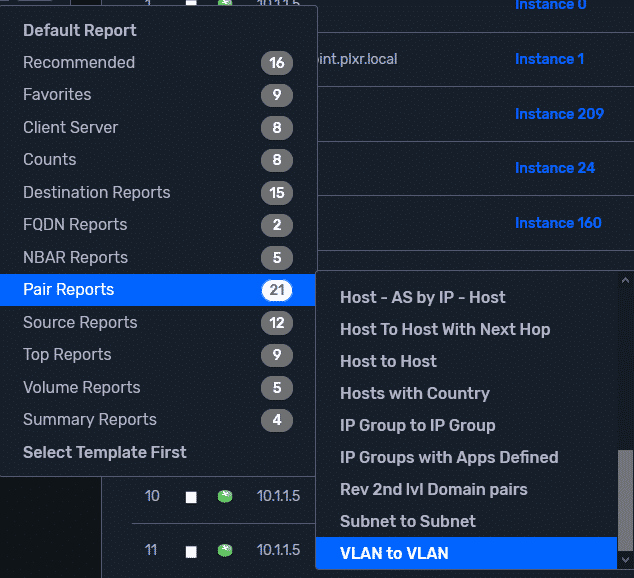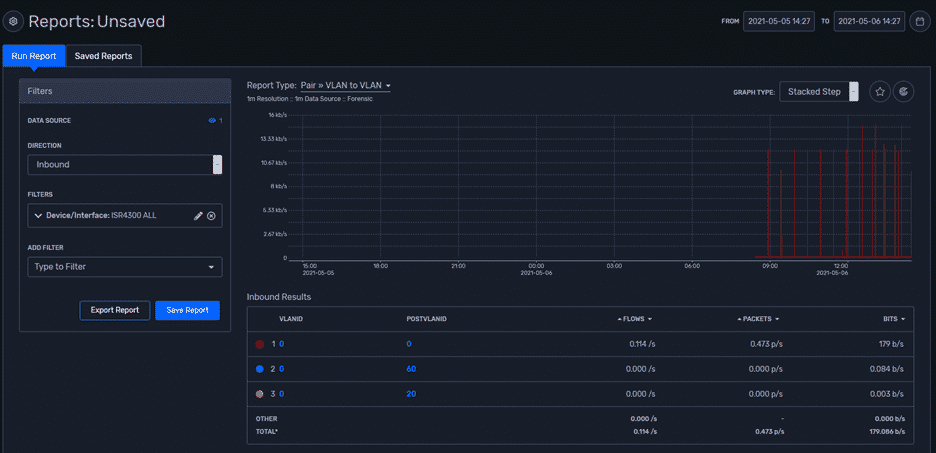I recently helped a customer configure NetFlow on their ISR4300. I found that ISR43XX/44XX routers run IOS-XE, which only supports Flexible NetFlow (FNF). NetFlow is a Cisco technology that provides statistics on packets flowing through the router. It’s the standard for acquiring IP operational data from IP networks.
Flexible NetFlow improves on previous versions of NetFlow by adding the capability to customize the traffic analysis parameters for your specific requirements. Flexible NetFlow facilitates the creation of more complex configurations for traffic analysis and data export through the use of reusable configuration components.
I will be showing the IPFIX configuration based on the diagram below:
Here is the output from the switch where we want to highlight the VLANs we have created.
Here are the steps to configure IPFIX on a Cisco ISR4300:
- Create two flow records, for Layer 2 and Layer 3 respectively.
- Create a common exporter for both L2/L3 configurations.
- Create two flow monitors; each will have separate flow records but the same flow exporter.
- Create a default sampler for each of the flow monitors.
- Apply two created flow monitors under same interface.
flow record Plixer-L3 match ipv4 tos match ipv4 protocol match ipv4 source address match ipv4 destination address match transport source-port match transport destination-port match interface input match flow direction match application name match routing source as match routing destination as collect routing next-hop address ipv4 collect ipv4 dscp collect ipv4 id collect ipv4 source prefix collect ipv4 source mask collect ipv4 destination mask collect transport tcp flags collect interface output collect counter bytes collect counter packets collect timestamp sys-uptime first collect timestamp sys-uptime last collect ipv4 destination prefix
Name your flow record for Layer 2 (e.g. “Plixer-L2”):
Flow record Plixer-L2 collect datalink destination-vlan-id collect datalink source-vlan-id match datalink destination-vlan-id match datalink mac destination address input match datalink mac destination address output !
Name your flow exporter (e.g. “Plixer-exporter”):
flow exporter Plixer-exporter destination 10.30.16.80 source GigabitEthernet1 transport udp 2055 export-protocol ipfix option interface-table option application-tableflow option application-attributes !
Name your flow monitor for Layer 2 (e.g. “L2m”):
flow monitor L2m description Monitoring Layer2 exporter Plixer-exporter record Plixer-L2 !
Name your flow monitor for Layer 3 (e.g. “L3m”):
flow monitor L3m description Monitoring Layer3 exporter Plixer-exporter record Plixer-L3 ! !
Name your sampler (e.g. “L2sampler”):
sampler L2sampler mode deterministic 1 out-of 100 ! !
Apply the configured flow monitors under the required interface:
interface Ethernet0/1 ip flow monitor L3m sampler L2sampler input ip flow monitor L2m sampler L2sampler input
Once you’ve applied the flow monitors under the required interface, it’s time to take a look at Plixer Scrutinizer and see the outcomes. As you can see, now we can bring up Layer 2 related information:
Besides traditional reports, we can also look into VLAN-to-VLAN conversations as well. In the output above, we see both VLANs created initially (20 and 60) and the native VLAN (0). The main purpose of this blog was to highlight the difference between two layers and to define what can be applied under each of them to avoid any conflicts during configuration itself. If you’re having difficulty, give us a call. We’ll be glad to walk you through it.






